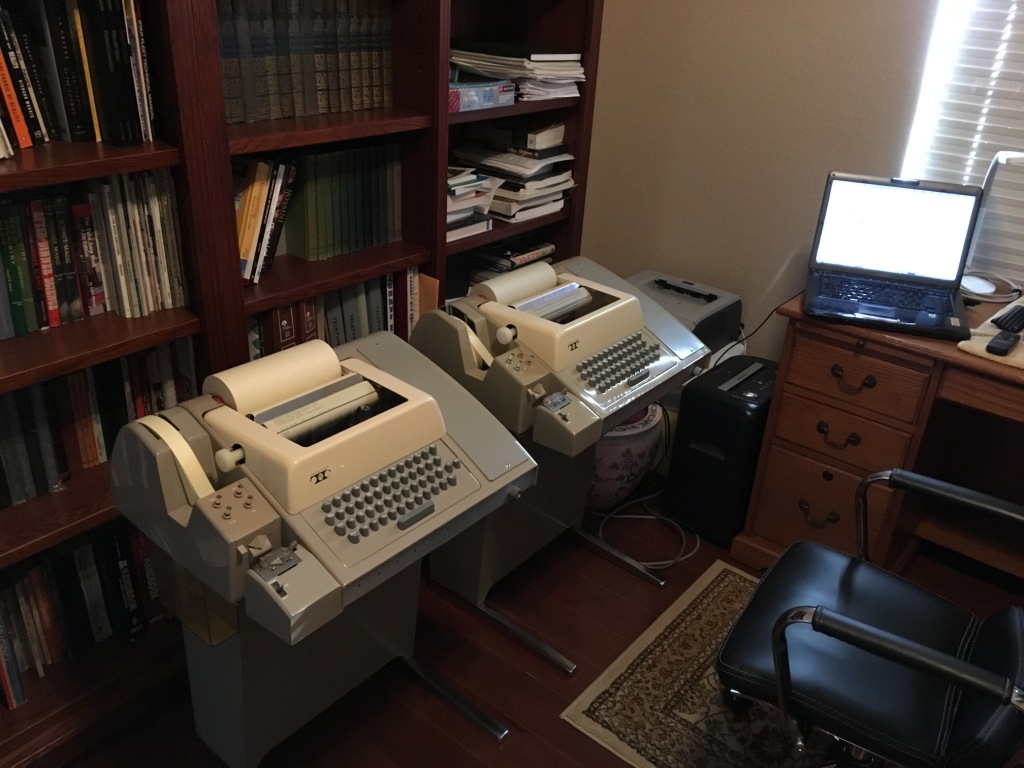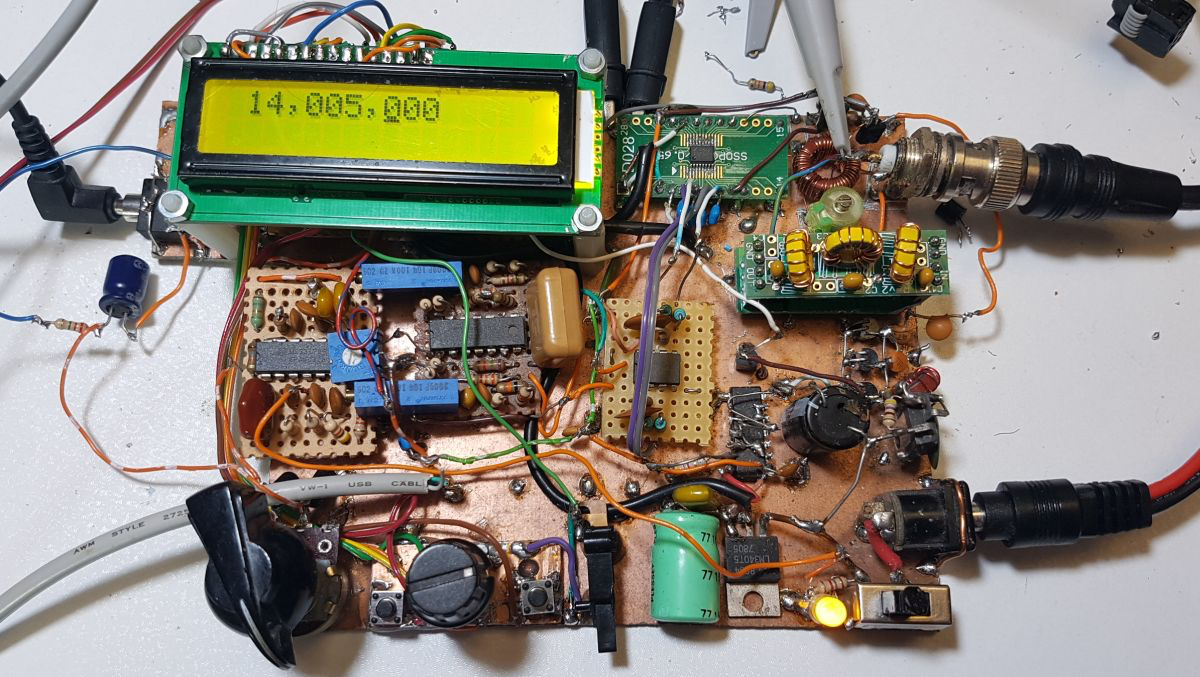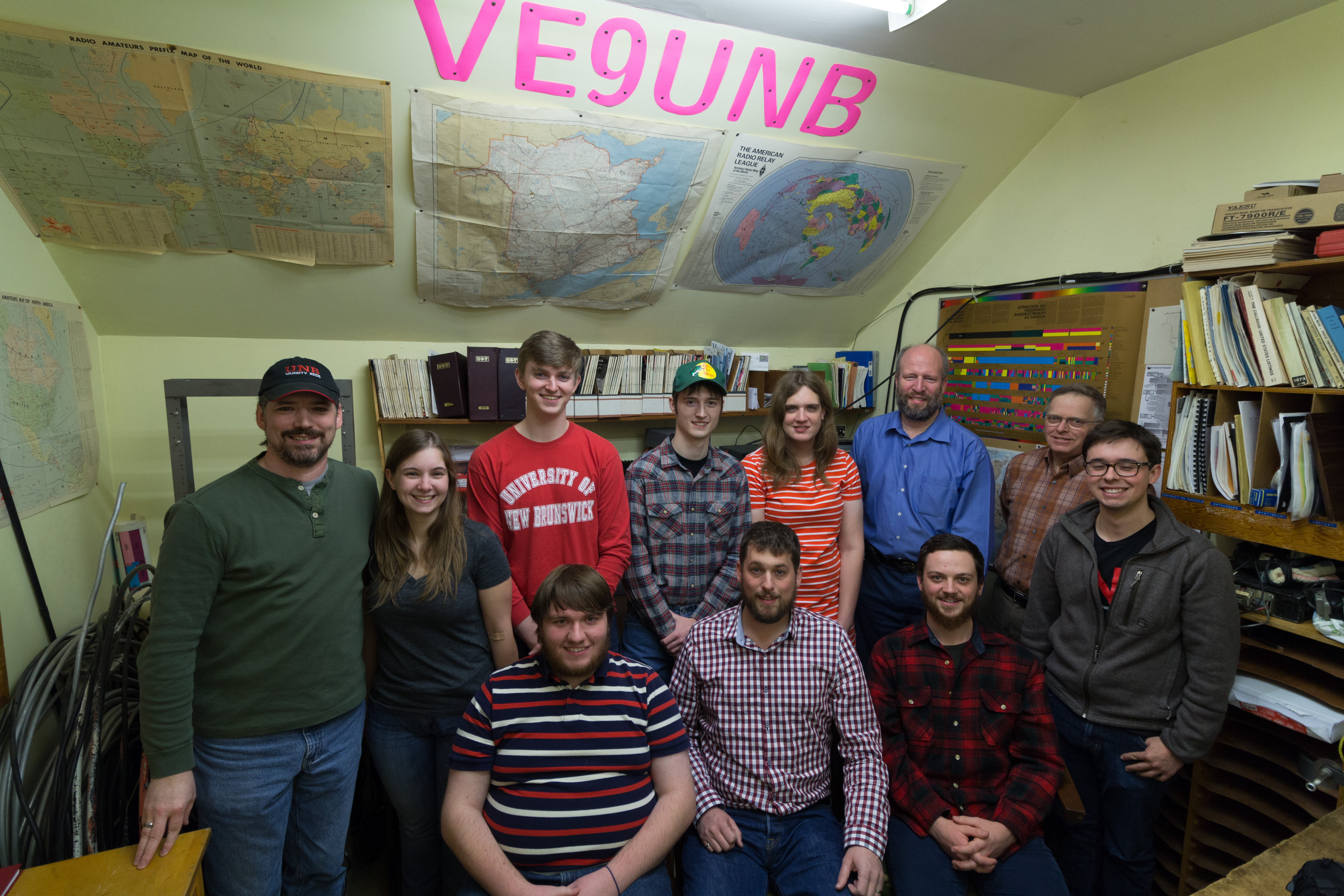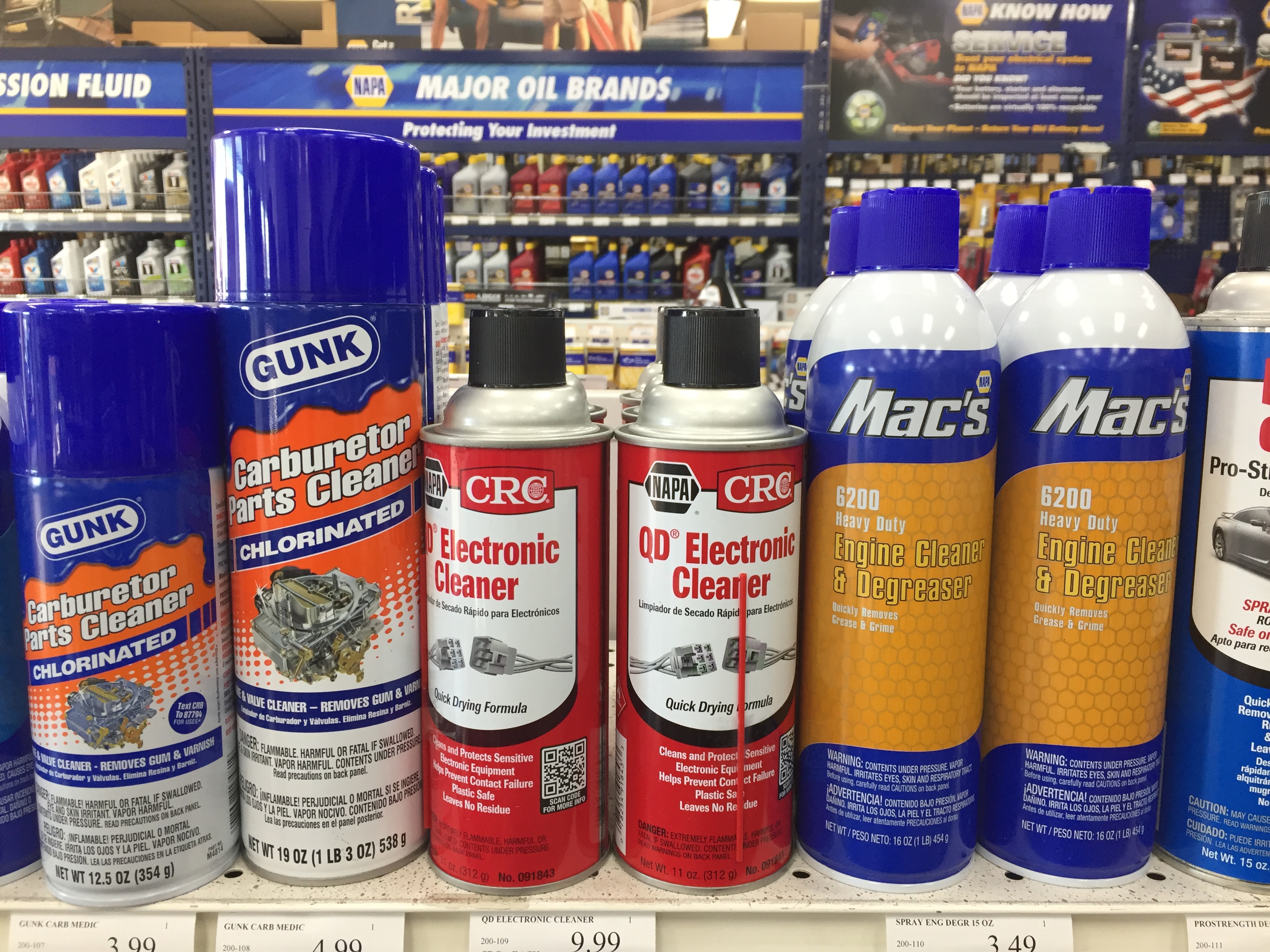 December 13, 2017 Editor: Paul Bourque, N1SFE | ||||||
IN THIS ISSUE
The ARRL Rookie Roundup, CW coming up on December 17 is an opportunity for newly licensed Amateurs, or any Amateur new to contesting to compete only against their peers. The objective of this event is to encourage those that are new to contesting to participate. Any Amateur can participate, but non-Rookies may only work Rookies, while Rookies may work anyone but only be scored against other rookies. There are single and multi-operator rookie categories, and single rookie operators can 'team up' ahead of time. As always, see the rules for more information. There are a number of unconventional events to take part in over the next four weeks, such as the Bruce Kelly 1929 QSO Party, where "whooping, chirping, buzzing, clicking, drifting, swishing, swaying, warbling" signals from vintage and period reproduction rigs return to the airwaves for two 24 hour intervals. For a 'conventional' contest, try the RAC Winter Contest. If digital is more your game there are at least eight RTTY events in the next four weeks including the ARRL RTTY Roundup, and don't forget the ARRL International Grid Chase starting January 1. No ARRL Contest Update will be published on December 27 - this issue contains listings for four weeks of contesting goodness! Happy New Year! 14 Dec - 10 Jan 2018 Complete information for all contests follows the Conversation section December 14 December 15 December 16
December 17 December 18 December 20 December 21 December 22 December 24 December 26 December 27 December 28 December 29 December 30 December 31 January 1
January 2 January 3 January 4 January 5 January 6
January 7 January 10 Reminder: The log submission deadline for most ARRL Contests is now FIVE DAYS after the contest end. This applied to Sweepstakes, and it applies to the ARRL RTTY Roundup coming up January 6. Another Reminder: If your club participates in the ARRL Contest Club competition, keep your rosters up to date on the contest club tools web page.
The "Heavy Metal" contest overlay is new for the 2018 ARRL RTTY Roundup. RTTY operators wishing to use 'mechanical teleprinters' on Baudot RTTY or ASCII can compete for a plaque in this special category. Note some excerpts from the rules for this overlay: "An electromechanical teleprinter shall be exclusively used as the Input/Output device for all contest exchange data. All incoming and outgoing data shall be decoded and printed on paper by said device utilizing a mechanical selector mechanism...Contest exchange macros in the form of pre-punched paper tape, tape loops, punched cards or other mechanical storage media are permitted (and encouraged).... Computers shall not be employed to display, modulate, or demodulate, or in any way encode or decode RTTY data. Terminal units that employ an embedded microprocessor to manage the decoding and encoding of AFSK/FSK RTTY data - and producing RS-232, IEEE-488 or equivalent output - are permitted." This could get really creative over time. The 2018 Youngsters On The Air (YOTA) camp event will be hosted by the South African Radio League (SARL). This event is held in the summer months in the northern hemisphere, so it will be winter in South Africa. The YOTA annual event brings together young people from Region 1 IARU Member Societies for a week of learning about new Amateur Radio skills and different nationalities and cultures. The event also helps foster international friendship and goodwill. CQ/X is a "GPS-enabled logging program developed for use by mobile operators in state and regional QSO parties" which works in conjunction with appropriate hardware to automate county and grid tracking during contests. The program's author, NO5W, has is updating it for use during the upcoming ARRL International Grid Chase starting January 1, 2018. Watch his website for details. The World Wide Radio Operators Foundation (WWROF) has announced the "KP4 Generator Project" to support the ongoing efforts of WA3FET, W1YW, K1VR, K1ZM, and others to gather funds for the purchase and shipment of generators to Puerto Rico in the wake of the devastation of the recent hurricanes. "Even now, many weeks after the storm, a significant percentage of the island's local hams are unable to send outbound health & welfare traffic because they have no power. As you can imagine, generators are in high demand and very short supply on the island... This project will raise funds to purchase Honda eu2000i generators for the amateurs of Puerto Rico. Well-known contester, Angel Vazquez, WP3R, will distribute these generators to local active hams for use in emergency-related communications and other applications based on situational needs." The WWROF will also match the first $5000 in donations received from clubs and individuals. The WWROF is an IRS-recognized 501(c)3 organization and donations are tax-deductible for U.S. taxpayers to the extent allowed by law. Donations may be made via the Donations button on the WWROF website, or by check to the address on the WWROF Donations page. The BITX40 40 meter SSB transceiver has been mentioned previously in this newsletter. Now, hfsigs.com is about to release the new uBITX QRP Multi-band HF Transceiver. According to their website, this is a board-level kit covering 3 to 30 MHz for SSB and CW operation. Assembly will require you to "... mount the board inside an enclosure of your choice, screw in the connectors and solder the wired connectors to the sockets and controls." The brain of the kit is an Arduino Nano processor running open source software. "The BITX boards are hand assembled by a collective of women. Each of the toroids is hand wound. This provides these women with a livelihood. The assembled boards are then DC checked and a final RF check is performed to check the receiver's sensitivity as well as transmitter's output before being shipped." The technology behind the transcription of the Apollo space missions tapes is interesting reading, and indicates some techniques that might be employed in the future for making transcriptions of an SSB contest weekend. (Dennis, N6KI) PA5MW tried to find the "best headphones for listening to 160m" in 2013, using multiple people and multiple tests. Besides the data, he's published suggestions on how to choose a set of headphones, and minimize risks for hearing loss. The popularity of electronic games has spawned E-Sports leagues. Some teen-aged players are approaching it like work, and why shouldn't they? They're getting paid a salary, they have benefits, and they have to keep competitive to stay on the team. Traditional sports fan demographics sound familiar: according to the article, the age of the average NFL fan is 50, while MLB fans are, on average, 57 years old. For the Overwatch e-sports league discussed in the article, spectators average 21 years old. Bob, N6TV, emailed: "I just noticed the "Donate" button on 3830scores.com. Clicking it goes to this page: http://www.3830scores.com/donations.php Noting that WA7BNM recently retired, I felt compelled to contribute. Contesting would be a lot less fun without 3830scores.com (not to mention AD1C's country files and K6TU's Super Check Partial files). I would like to encourage others to support these sites by sending PayPal donations where requested, or by sending prefix / zone updates to AD1C, and recent Cabrillo files to K6TU (see websites for instructions)." QRP Labs developed a single band multi-feature 5 watt CW transceiver kit, the QCX, for the 2017 YOTA Summer Camp event. Apparently the $49 kit has struck a chord, as there's been demand for nearly three thousand of the kits, and counting! I asked Hans, G0UPL, about how the QCX came about, here's his excerpted reply: Yes, the initial development was motivated by the RSGB-hosted YOTA 2017 summer camp buildathon. It's a funny story. The RSGB sent me an email back in February, asking for proposals for the buildathon. I saw that they were planning to have 78 attendees from around IARU region 1, and then I saw that their entire budget for the kits was 1000 pounds. Which came to around $16/person at that time. I just laughed and clicked "delete". What can you do for $16? But then I remember well, it was a Friday, and my mind just kept coming back to that deleted email from RSGB. I realized that the email must have gone out to several kit producers. I speculated that most (if not all) of those would be answering with a proposal for some shack accessory or some simple toy, a CW practice oscillator perhaps. I thought that this is about "Young persons ON THE AIR" so a proper transceiver would be best. I know there are some very cheap radios around... like ... on eBay etc. But I am not a fan of these radios, particularly for newcomers. Even let's not start to discuss the build quality, component quality and total lack of support. (Those radios could be) discouraging for a newcomer. I thought - well, what if that $16 could be used to produce a really clever radio, with top performance, and simple to build - that I could supply at cost (or small subsidy) to the RSGB YOTA 2017 summer camp buildathon - then sell the rest of the batch of 500 at a profit (I am a business, after all). I wrote an email reply to RSGB with my idea... I would include built-in test and alignment equipment, so that it could be built by ANYONE even with no test equipment at all: DVM, Frequency counter, RF power meter, Signal generator - as well as being able to inject the signal generator into the front end and have the microprocessor assist with the alignment adjustments. I would use a receiver architecture with top performance and all my experience with QRP Labs kits to date, to source good quality components at good prices. The Si5351A synthesizer at the heart of it, would be used with all three oscillator outputs to achieve lots of functionality, like the signal generator etc. The microcontroller in charge of everything, providing many convenience features like dual VFO, split operation, stored messages and frequencies, and I could even add a CW decoder using some simple DSP (Goertzel algorithm). I'd use a Class-E PA design and aim for a full 3-5W output, a decent power with which making contacts is easy, even without a fancy antenna.
It was hard to wait until Monday (after the Friday's email), so I could begin work on the first development version. By the end of the week, I was on air on 40m. Then there were months of work to productize this - to make a PCB layout, procure samples of all the parts, build prototypes, manufacture the kits - and not least of all, write the 138-page assembly manual! Later I changed the radio to 20m, and then 17m (the RSGB wanted their transceivers to be 17m (since it IS in fact, 2017 hi hi). The YOTA kits were due for delivery at the end of July and I made it just in time. The YOTA buildathon went very well, by all accounts. When the kits went on general sale on August 21, the remainder of the first batch of 500 sold in just over 24 hours - I was NOT expecting that! I immediately started producing a new batch and taking pre-orders and that situation has continued ever since, we are still fighting to cut down the waiting list, get the QCX kits shipped out! Some order statistics:
There are quite a number of YouTube reviews etc now, see QCX Videos - and constructors are finding many innovative ways to produce enclosures for their QCX kits: QCX Gallery A great many people have now told me that the sensitivity is as good as their top-end commercially built radio, and weak signal handling, dynamic range etc are also excellent. So, it seems I achieved my goal, I took on the challenge to produce a radio with great performance, easy to build, and low cost, all three at the same time... and it seems I managed it! The kit has been tremendously popular in just 3 months and I think that it will probably become legendary! 73 Hans G0UPL Congratulations, Hans! An expanded version of Hans's QCX story is here. Snubber - a circuit that is used to suppress voltage spikes. On older equipment, especially amplifiers, mechanical relays are sometimes used for the transmit/receive (TR) switch. When mechanical relays are de-energized the collapsing magnetic field of their coils generate a reverse voltage. This reverse voltage can be much greater than the relay voltage and may be harmful to lower-voltage solid state electronics. Snubber circuits are used to reduce the reverse voltage. Snubbers are also used in modern electronics to reduce transients where reactive loads are subject to rapidly changing current. Rudy Severns, N6LF, whom you may recognize from his work with antennas, has written a book on this topic which is available on his website for free download.
The MAR section was represented in part by VE9UNB during the ARRL Phone Sweepstakes. The University of New Brunswick Radio Club tripled the number of contacts they made versus their 2016 effort. The reason? "The major differences between 2016 and 2017 were our band conditions, experienced students from the 2016 ARRL Sweepstakes SSB contest, and the welcome the presence of Ryan VO1RCH." DX Engineering has posted a brief 'unboxing' of the new Icom 7610 transceiver, and Tim, K3LR, makes a contact with it from N8DXE, DX Engineering's employee club station. DL0ABR constructs an HF LDMOS FET based power amplifier using water-cooled BLF188XRs in his YouTube video, featuring techniques like surface mounting components with a pick and place machine, oven soldering, and computer aided machining. KE0OG's video on the BITX40 40-meter SSB Transceiver discusses the transceiver, its construction, and performance. Tips on how to avoid certain pitfalls are also provided. He has also posted additional videos detailing the kit contents, and some modifications. KE0OG has also featured the QCX transceiver kit in a recent video. If your headphones don't fit the way you'd like, perhaps you'd prefer to make your own "custom in-ear monitors." Think earbuds customized to the shape of your ear. Dan, N6MJ, operated as ZF2MJ in the 2017 CQWW CW. Put on your stereo headset and listen to this YouTube video of him running SO2R. What's one way he practices? Using Morse Runner, like this. Note the similarity of conditions to how he runs in the real contest. The raw scores for the 2017 CQWW CW are available on the CQWW website. For the first time ever, raw overlay scores are also available for the CW and Phone contests. According to Dave, K3ZJ: "The number of entries for the 2017 CQWW SSB and CW weekends each exceed the previous all-time record! The number of logs submitted for each mode is almost QUADRUPLE the number received in the late 1970s. In 30 years -- 1977 to 2017 -- CQWW SSB entries increased by 394 percent, while CW increased by 361 percent." (Doug, KR2Q, and Dave, K3ZJ, via CQ-Contest reflector) Transceiver Filtering versus RTTY Demodulator Filtering Make sure you understand the effect of using any 'dual peak' or 'twin peak' filtering feature your transceiver may provide when used in conjunction with your RTTY program through on-the-air testing. In some cases, the transceiver filtering may help pull out very weak single signals. In other cases such as when multiple signals may be present, the use of transceiver filters may make copying more difficult. Some well-known RTTY contesters such as Ed, W0YK, recommend to NOT use the built-in radio filters with most RTTY decoders.
A new device called a "Walabot" works with (some brands of) smart phones to depict what is inside the walls of your home. This 'high resolution stud finder' claims differentiation for different types of studding, pipes, and electrical, and even touts detection of animals that might be present within wall voids. (Tim, K3HX) Researchers recently fabricated Memristors in array configurations to demonstrate vector matrix multiplication in the analog domain, which has application in the areas of signal and image processing and machine learning. The authors of the paper achieved high yields in their construction of the memristor arrays, and then used their devices for signal processing tasks such as the Discrete Fourier Transform, image compression, and signal filtering. By keeping signals in the analog domain, digital conversion delays and processing latencies can be avoided in some applications. The authors estimated a readout time of less than 10nS for their devices, implying a capacity of 1.64 tera-ops per second. Check out this application for those inexpensive DVB-T USB dongles: Reception of Russian Meteor-M2 Weather Satellite transmissions in real-time, using the SDR# DSP application along with a QPSK Demodulator plug-in. The rather complete article even includes an antenna recommendation. GnuRadioCon is a yearly conference focused around the uses of GNU Radio. The 2017 conference was held in September in San Diego, and videos from some of the presentations are now appearing on YouTube. Subjects of the talks included adaptive digital predistortion, synchronizing multiple RTL-SDRs for beam forming for GPS, and whether in the age of SDR, "Does the Radio Even Matter?" According to Elektor Magazine, sodium-ion rechargeable batteries may be on the horizon in the popular 18650 size. The article describes the battery chemistry as providing longer life, and more charge/discharge cycles than Li-ion. (Elektor) David, AD8Y, wrote in response to the variometer word to the wise last time: "You might be amused--FCC Element 6, for the Radiotelegraph Operator license, does have a question on variometers: 6A459 D Transmitters that employ variometers rather than variable capacitors as tuning elements do so because of: A. The size of required variable capacitors in the medium frequency band B. There is no such thing as a variometer! C. Variometers can be relatively compact D. A & C Great test!" David also happens to be the Faculty advisor to the Case Amateur Radio Club of Case Western Reserve University, W8EDU. Etiquette and Protocol Hams occasionally send contest related information, and of course corrections, to the contest-update@arrl.org email address, and I'm grateful to receive all of it, thank you! Some, like Dennis, N6KI, Ward, N0AX, and Tim, K3HX, go above and beyond, and deserve special recognition for their consistent submission of relevant and interesting items. Sometimes a submitted tidbit itself might not get published, but it will spur a little research into a related area, and that turns into an item that does get published. Dennis, N6KI, sent this in, which seemed just fine as-is: Who better than the Japanese to lecture us on being a considerate Ham Contester/Operator? While helping John, K6AM/ZF2AM fill out and return the many QSL cards that come into world-class contest station ZF1A, I came across Hirofumi Yoshioka, 7K1PTT's "Amateur Code"
Happy New Year! That's all for this time. Remember to send club newsletters, contesting related stories, book reviews, tips, techniques, press releases, errata, schematics, club information, pictures, stories, blog links, and predictions to contest-update@arrl.org 73, Brian N9ADG 14 Dec - 27 Dec 2017 An expanded, downloadable version of QST's Contest Corral in PDF format is available. Check the sponsor's Web site for information on operating time restrictions and other instructions. HF CONTESTS AWA Bruce Kelley 1929 QSO Party, Dec 9, 2300z to Dec 10, 2300z, Dec 16, 2300z to Dec 17, 2300z; CW; Bands: 160, 80, 40m; RST + Name + QTH + Eqpt Year + Transmitter Type (see rules for format) + Input Power (W); Logs due: January 15.
VHF+ CONTESTS See ARRL Rookie Roundup, CW, above. 14 Dec - 27 Dec 2017 December 14, 2017 December 15, 2017 December 16, 2017 December 17, 2017 December 20, 2017 December 21, 2017 December 22, 2017 December 23, 2017 December 24, 2017
December 25, 2017 December 30, 2017 December 31, 2017
January 2, 2018 January 3, 2018 January 4, 2018 January 5, 2018 January 6, 2018 January 7, 2018
January 9, 2018 January 10, 2018 ARRL Information Click here to advertise in this newsletter, space subject to availability. Your One-Stop Resource for Amateur Radio News and Information ARRL membership includes QST, Amateur Radio's most popular and informative journal, delivered to your mailbox each month. Subscribe to NCJ - the National Contest Journal. Published bimonthly, features articles by top contesters, letters, hints, statistics, scores, NA Sprint and QSO Parties. Subscribe to QEX - A Forum for Communications Experimenters. Published bimonthly, features technical articles, construction projects, columns and other items of interest to radio amateurs and communications professionals. Free of charge to ARRL members: Subscribe to The ARRL Letter (weekly digest of news and information), the ARES E-Letter (monthly public service and emergency communications news), Division and Section news -- and much more! ARRL offers a wide array of products to enhance your enjoyment of Amateur Radio. Visit the site often for new publications, specials and sales. Donate to the fund of your choice -- support programs not funded by member dues! Reprint permission can be obtained by sending email to permission@arrl.org with a description of the material and the reprint publication. ACKNOWLEDGEMENTS ARRL Contest Update wishes to acknowledge information from WA7BNM's Contest Calendar and SM3CER's Contest Calendar. | ||||||











